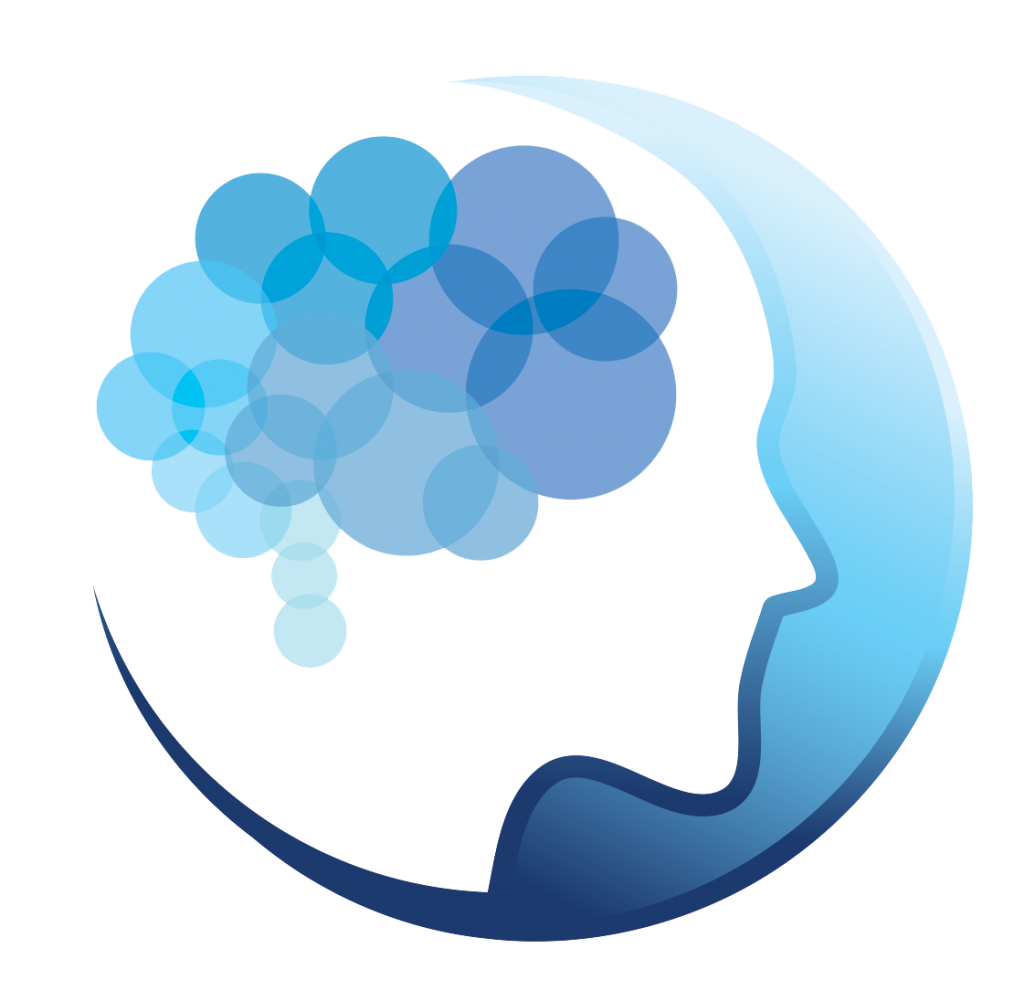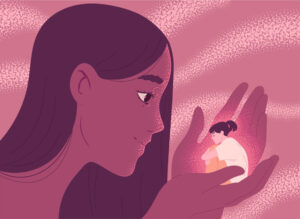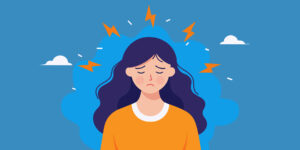Related Resources
For Healing Shame and Self-Judgment
A Self-Havening Guided Meditation for Releasing Judgment and Shame
Stopping the Relationship Patterns that Cause You Pain
In this video you will explore something called a Cyclical Maladaptive Pattern. These are those patterns that show up in a relationships and become unintentionally reinforcing in regards to painful beliefs about yourself such as being “unlovable”, “not good enough”, “a failure” and more. Remember that 90% of each moment is informed by the experiences of our past. Your brain creates patterned ways of interacting with the world in order to decrease information processing overload and enhance the likelihood for survival. Because humans are biologically designed to be in relationship with one another for survival–in the early years of your development your sense of self was largely defined by how your caregivers, friends, peers, teachers, etc. interacted with you. If there were painful moments of rejection, bullying, teasing, fear, (or more) in your childhood then your amygdala may be participating in your present day relationships and accidentally recycling the patterns of the past into the present moment.
Self-Havening Meditation for Releasing Painful Emotions & Building Compassion
Do you desire to change your relationship with the parts of yourself that you judge or feel ashamed of? In this guided meditation, Dr. Kate will walk you through visualizing these parts of yourself as boxes that you’ve set aside, off in a faraway corner of your mind. She invites you to pick them up one by one and bring them into the present moment in order to question their origins and validity. Dr. Kate encourages you to recognize that these parts of yourself were meant to keep you safe, and this job might not need to be done anymore. Imagine being in a positive relationship with these parts of yourself. Imagine inviting these parts of yourself to envision doing their job in a different way, maybe they’re no longer needed in the present moment. Dr. Kate will help you to imagine with all your senses and to use breathing exercises that will further enhance relaxation. This calming video will take you to a safe space within your mind’s eye where you can appreciate the beauty of what your very own visualization can create.
Shame and Self-Judgment: Painful Yet Powerful Opportunities for Self-Healing
By Dr. Kate Truitt
“It appears shame, at least in evolution, has served to keep the individual’s behaviors in line with the cultural norms that further ‘survival of the tribe’.”
Babette Rothschild
Shame. What do feel when you hear that word? What other related words come to mind when you hear it? I can think of some. Rejected. Abandoned. Alone. These are all very powerful, cringeworthy words because we know the impact they can have when we encounter them as emotional experiences in our lives.
In fact, these words are associated very closely with one of the most significant human phobias—the fear of public speaking. There are many reasons this is true, the foremost being that when you are speaking in front of a crowd you can mess up badly. In so doing there is the possibility that you could be rejected, abandoned, judged harshly, or shamed.
Shame is an awful thing to experience, whether we are being shamed by others or we are shaming ourselves, but as humans we are hard-wired to experience feelings of shame.
Recognizing the Usefulness of Shame

I talk a lot about Amy, the amygdala of our brains and our fiercest protector. She is always there on the lookout for moments that threaten our existence, keeping us safe, but she is also a shame junky. She is the construction foreman of the shame freeways that are built through our brain over our lives to help protect us.
So how does shame keep us safe?
Understanding shame is important in recognizing where these deeply painful emotional experiences come from and to give them some context. In evolutionary psychology and neuroscience, we have known for some time that when people are feeling shame it is because our brain is telling us that we need to stay alive. Shame’s original intent was to keep us in line with the customs and cultural norms of our community so we would not be kicked out. Because we rely on community for survival, shame helps keep us alive. If we don’t have a village around us we are not going to survive for very long.
According to Yuval Noah Harari’s wonderful book, Sapiens: a Brief History of Humankind, the Cognitive Revolution, which began about 70,000 years ago, foundationally changed where humans sit in the food chain of mammals. This revolution came because of human relationships—the ability of humans to gossip. I say this only half-jokingly because one of the crucial ways that people kept themselves safe in those days was knowing which tribe members were on your side and which ones weren’t. That is, where to place trust and loyalty. Shame went hand-in-hand with fears of being rejected and abandoned.
The next time you experience shame, I’d like you to give yourself a pat on the back for being survival focused. I also would invite you to change the meaning of that awful emotional experience by zooming out, checking in with your brain and asking:
“Why is this emotional data point here? Why is my amygdala throwing up this yellow flag?”
Then also ask: “Is this appropriate? Have I legitimately done something that has put me at risk for being removed by this village that matters to me? Or am I perhaps bringing an experience from my past into the present moment?”
The Past Experiences We Bring Along With Us on Our Journey

I would like to spend a moment on those past experiences that we bring into the present. This is where the patting yourself on the back comes in. We can acknowledge Amy for recognizing a threat and show her appreciation for her efforts. At the same time, we can step back and evaluate whether those behaviors or coping mechanisms or communities that kept us safe in the past are still useful for that purpose in our present lives. It can help to visualize those parts of yourself as boxes that you have set aside in a faraway corner of your mind. When you come upon one of those boxes, bring them into your present moment and question where they came from and whether they are currently needed in your present life. If they are, perhaps you can envision a different way to have them do that job. I have created a YouTube video titled, “Self-Havening Meditation for Releasing Painful Emotions & Building Compassion” that can help you with this exercise.
Shame still serves a useful purpose by keeping us mindful of social norms, but we still need to be assessing on our own whether those social norms work for us. When we begin to understand and re-conceptualize these moments we can turn toward tackling the critical question of community: “Is this really a village I want to be a part of?” Often, we find that villages that have served us well in our past lives are no longer serving us well in our present. This provides an opportunity to step back for a moment of agency and personal empowerment. It may be time to find a new village.
The following video—part of our Building Healthy Relationships video series on YouTube—explores a pivotal two-part question: Do you surround yourself with people who fill you up, or are you constantly interacting with people who let you down or even hurt you? In this video we’ll go over a simple exercise that will help you accurately answer that question.
Do You Trauma Bond or Do You Have Healthy Relationships? Let’s Dig Deep and Create Empowered Change.
Looking for Other Opportunities to Challenge Shame and Self-Judgment

The human condition is fraught with frailties—anxiety, depression or even chronic pain and illness and more. All of these conditions ride shotgun with self-judgment and shame.
As shame expert Dr. Brené Brown (2007) states: “Shame is the most powerful, master emotion. It’s the fear that we’re not good enough.” In our brains this powerful emotion can take on a life of its own and begin to exist beyond outside its original evolutionarily purpose. So, Amy needs to experience a lot of understanding and compassion in her healing journey, because, as with you, her past is always present.
Life can be hard, but there are always opportunities for self-healing. When we see through a lens of self-judgment and shame, we have an expectation of what we should be that is different from what we are. We are creating roadblocks along the way toward living our most fulfilled selves and lives.
In my own road toward healing I look back on those moments when I simply stood back and said, “This is what it is.” Coming to that realization and accepting it is not easy. In my case one of those moments was accepting the fact that after my battle with encephalitis I would have brain damage for the rest of my life. There will be those times when I’m hosting a workshop and my body will be in intense pain. Stepping back and acknowledging that is the opportunity of self-acceptance.
When we objectively look at shame and self-judgment we are empowered to acknowledge that those feeling states are pressuring us to be something other than what we are right now. When we are doing that, we are taking ourselves out of the present moment and dishonoring and disrespecting the incredible, magical biological experience that is our mind and body working together.
In her book, I Thought it Was Just Me, But It Isn’t, Brené Brown (2007) stressed the importance of connecting with ourselves and being cognizant of both our strengths and limitations. “If we want to build shame resilience and cultivate our authenticity, we must learn how to become members of our own connection network,” she wrote. “We must learn how to respond to ourselves with empathy and understanding.”
What if in those hard moments there is an opportunity to have things just be as they are? What if you give yourself permission to have this struggle and be nothing more or nothing less than exactly as you are? What if in those moments you gave yourself permission to prioritize your care—turning inward to take care of yourself instead of fulfilling an external obligation. I invite you to take a few moments and explore some of the videos in the sidebar of this article, which can help you do that.
The old analogy of the oxygen mask falling from the ceiling of the aircraft can serve us well here. In that critical moment, who gets the priority of being safe first? Yourself. That’s because only when we can breathe are we able to be in service of others.
References
Brown, B. (2007). I thought it was just me (but it isn’t). New York, NY: Avery.
Rothschild, B. (2000). The body remembers: The psychophysiology of trauma and treatment. New York, NY: W.W. Norton & Company.










